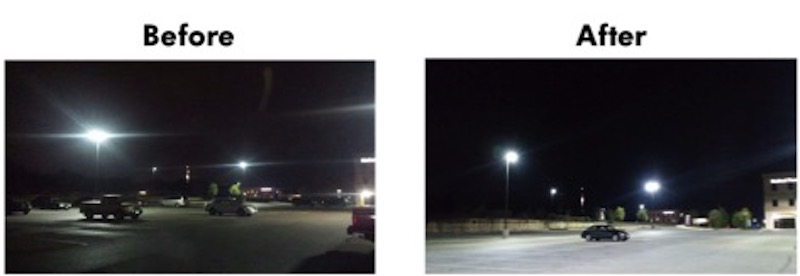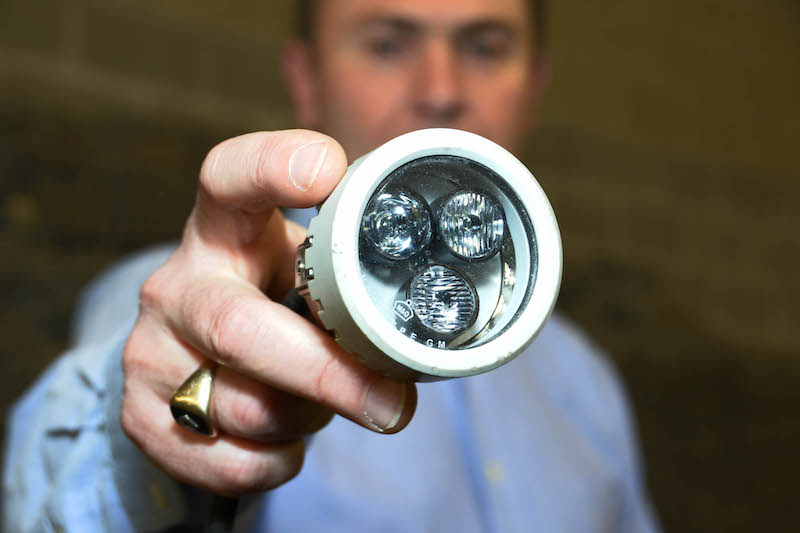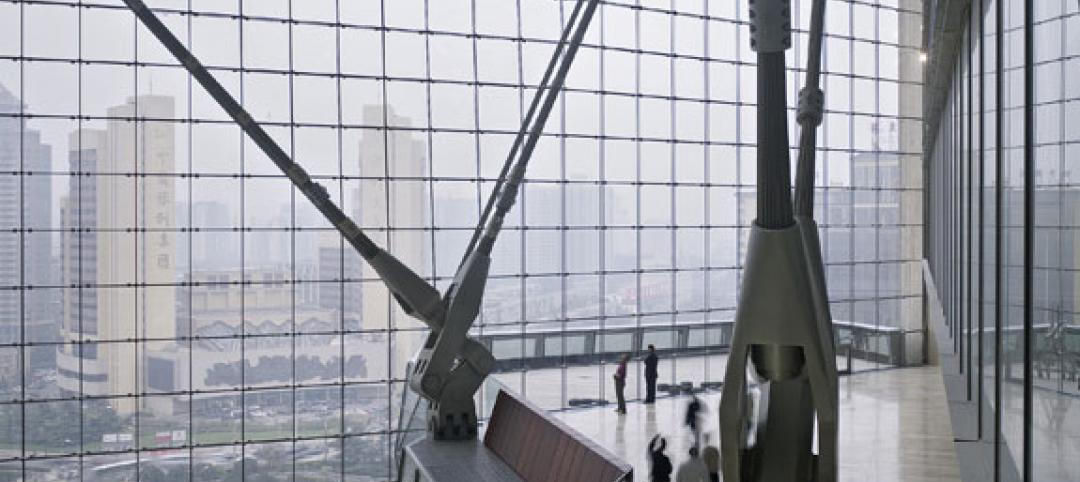As revenue and margin pressures continue to challenge the healthcare industry, new lighting technologies can offer much needed operational cost savings while improving safety and the patient experience.
Most healthcare facilities in the United States utilize various legacy lighting systems to provide necessary illumination of their parking garages, corridors, stairwells, and critical patient care areas. These systems in many cases are costly to maintain and account for a large portion of the utility spend due to poor energy efficiencies.
The Benefits of LEDs
Light Emitting Diode (LED) lighting technologies have matured into viable products for healthcare facilities. In the past five years, there has been a rapid improvement and availability of LED products as primary light sources in most facility applications. In comparison to traditional fluorescent lamps, LEDs offer many benefits:
● High efficiency (useful light output per unit of energy)
● Reduces electricity cost
● Less heat generated reduces air conditioning requirements
● Longer life (60% higher rated life than equivalent fluorescents)
● Lesser need for a patient disruptive lamp replacement
● Fewer lamp changes reduces patient Infection Control risk
● Easy plug and play retrofits
● Reuses existing light fixtures for lesser cost and disruption to hospital operations
● Rapid conversion to LED’s by simply replacing fluorescent lamps with LED lamp
● No appearance change to ceilings or fixtures after work is done
● Can reuse existing ballasts in most cases
● Environmentally friendly
● LEDs contain no toxic mercury - reducing lamp disposal costs
● Longer life reduces quantity of lamps needing disposal/recycling
● High efficiency reduces electricity generation greenhouse gas emissions
● Better lighting quality
● Enhanced safety due to better light distribution reducing shadowed areas
● Spaces appear brighter and more inviting
Exterior Lighting
Beginning in 2014, working with CHRISTUS Health System, we identified several key areas where new LED technologies had matured sufficiently to reliably and cost effectively offer significant benefits. After a return on investment (ROI) analysis, the areas that would benefit the most from LED installations were spaces requiring 24/7/365 operation with electricity costs of $0.07/kWh or higher. These filters identified parking garages and large parking lots as projects with the best ROI and energy reduction potential in excess of 70%.
CHRISTUS Health, located primarily in Louisiana and Texas, operates 20+ Acute Care and Critical Access hospitals. A review of the enterprise portfolio identified eight parking garages totaling more than 4.5 MSF that were viable candidates for an LED upgrade. These garages had a variety of existing lighting types including high pressure sodium, metal halide, and fluorescents, many at end of life, requiring frequent and expensive maintenance.
Implementation
With the project scope identified, Requests for Proposals (RFPs) were issued to five major lighting installation firms to quantify savings potential under market conditions and evaluate product recommendations. The result of this extensive review confirmed earlier estimates of a 70+% energy savings potential with ROIs in excess of 40%. The program was presented to Lance Mendiola, VP of Facilities Management and Construction for CHRISTUS Health and funding was approved. The retrofit work was completed within 90 days of funding.
The garage lighting retrofit program has been so successful that CHRISTUS Health received recognition from the Lighting Energy Efficiency in Parking (LEEP) committee (PNNL/DOE/BOMA). In June of 2015, CHRISTUS Health was presented two awards from the LEEP organizers for “Exemplary Parking Lighting Program in HealthCare” (only Healthcare provider recognized) and “Greatest Savings Realized at a Facility” for one site that exceeded 80% savings.

Interior Lighting
Building on the success of the 2014 Parking Garage LED program, attention was turned toward interior lighting. In 2015, a pilot program of 4,500 T8 LED retrofit lamps at the CHRISTUS St. Michael’s Hospital in Texarkana, TX and the CHRISTUS Hospital in Coushatta, LA was launched. The pilot program validated the ease of installation, quality of illumination, and energy savings while identifying the logistical requirements needed for an enterprise wide implementation. An effort to improve the ROI of the program was realized through the use of utility rebates (also used for the Parking Garage Program) that were available for this initiative.
A survey of the CHRISTUS hospital locations was conducted to determine the locations where the program would have the biggest impact. An immediate opportunity was identified to upgrade at least 35,000 T8 linear fluorescent lamps with the LED retrofit lamps. Always striving to maximize value, the lamp purchase was pooled with another large healthcare provider’s program. The combined purchase of 85,000 lamps offered significant discounts (>40%) that were passed on to the two participating clients.
The installation options considered for this program included both self-performed installation and/or using a specialized third party lighting installation company. Eventually, it was decided to use a third party installation company to replace the lamps in the hallways/lobbies and other easily accessible areas, while the in-house team would do the installations in the surgery and patient-care areas. This approach allowed for the project to be completed in the shortest time possible while also providing flexibility in the schedule to access critical and patient-care areas as needed.
The specifics of this program were used to develop a business plan that demonstrated annual savings of over $340,000 for an initial investment of $670,000. With the inclusion of $140,000 in utility rebates, this translated to a net payback of less than 1.6 years and ROIs of 60%. This proposal was presented to CHRISTUS Health who again saw the opportunity and approved the funding for additional projects. Total installation time for the 35,000 lamps was less than 90 days, not including the utility rebate inspections prior to and after the installation.
Upon completion of the interior LED lighting retrofit program, the results were submitted to the PNNL Interior Lighting Campaign committee for their evaluation. Upon their consideration and comparison to other lighting projects installed across the US, CHRISTUS Health was again recognized for their focus on energy efficiency with an “Exemplary Healthcare Sector Award”.

Conclusion
The lighting initiatives implemented by CHRISTUS Health will result in $686,000 in annual cost savings and 7,200,109 in electric kWh reduction which translates to 5,258 tons in CO2 emissions reduction or the equivalent of 1,167 cars taken off the road. For the next phase of the program, we are evaluating additional LED lighting technologies to extend the significant savings achieved in the first two years. Additional energy programs on the Supply side (negotiated energy contracts) and large scale HVAC retro-commissioning work have complemented and contributed significant additional cost savings to the overall effort. The financial and environmental benefits of this energy program support the stewardship value of CHRISTUS Health while also reducing their utility costs and improving their operating margins.
CBRE has partnered with CHRISTUS Health to provide outsourcing Facilities Management services and other related services since 2005. John Beck serves as the Alliance Director.
Related Stories
| Feb 25, 2013
What end-users do (and don't) know about lighting technology (infographic)
The fifth annual SYLVANIA Socket Survey from OSRAM SYLVANIA finds that consumers are adjusting to new legislation and energy-efficient lighting options, with about half saying that they plan to switch to new lighting technologies.
| Jun 1, 2012
New BD+C University Course on Insulated Metal Panels available
By completing this course, you earn 1.0 HSW/SD AIA Learning Units.
| Jun 1, 2012
AIA 2030 Commitment Program reports new results
The full report contains participating firm demographics, energy reduction initiatives undertaken by firms, anecdotal accounts, and lessons learned.
| May 31, 2012
Product Solutions June 2012
Curing agents; commercial faucets; wall-cladding systems.
| May 29, 2012
Reconstruction Awards Entry Information
Download a PDF of the Entry Information at the bottom of this page.
| May 24, 2012
2012 Reconstruction Awards Entry Form
Download a PDF of the Entry Form at the bottom of this page.
| Mar 1, 2012
8 tips for architects to consider before LED installation
Lighting experts offer Building Team members critical information to consider before upgrading lighting systems to LEDs.
| Feb 28, 2012
LUMEnergi names Weinbaum president and CEO
Weinbaum’s experience spans communications, nanotechnology, electronics components, consumer products, semiconductors, software, wireless and lighting.












